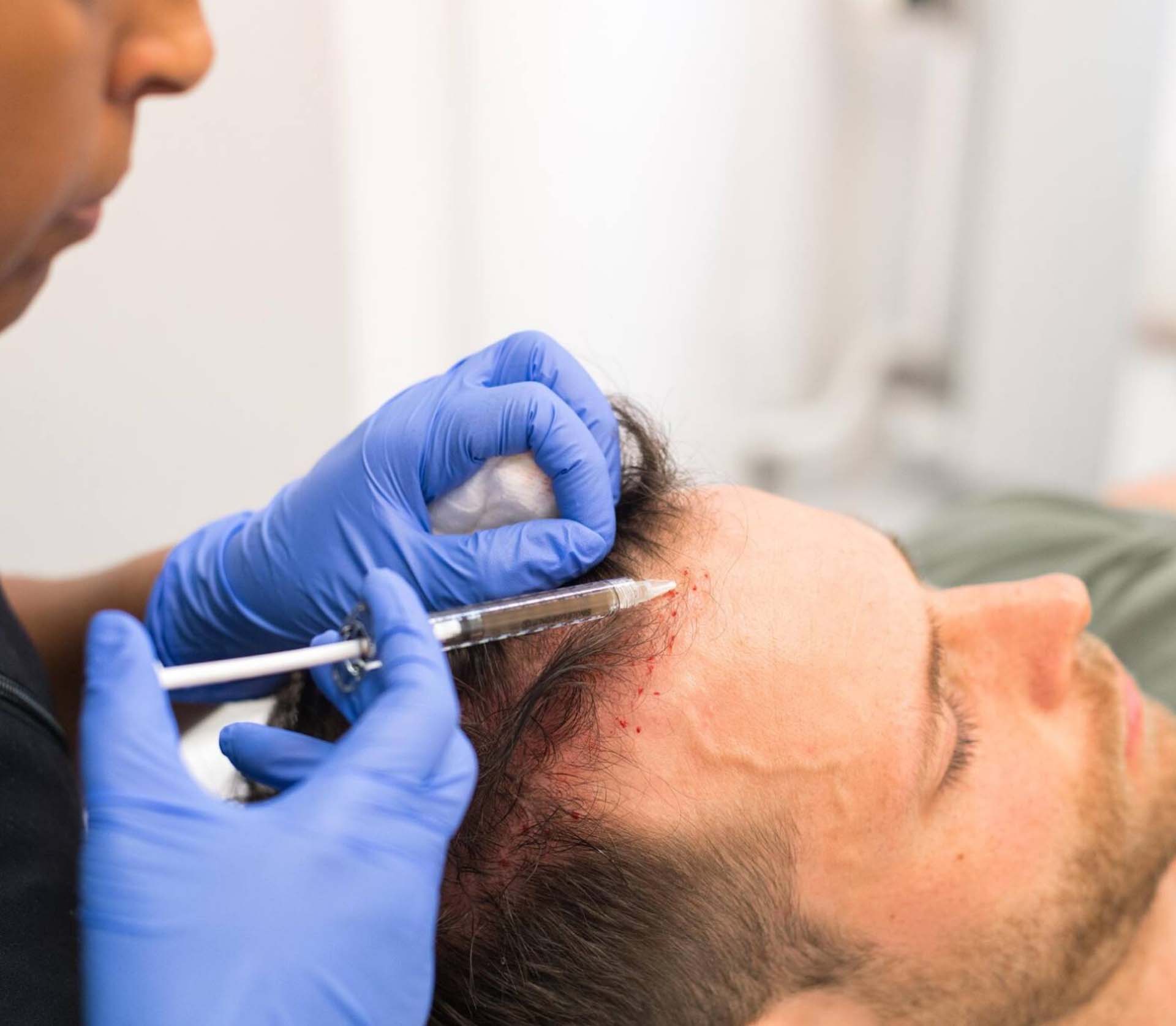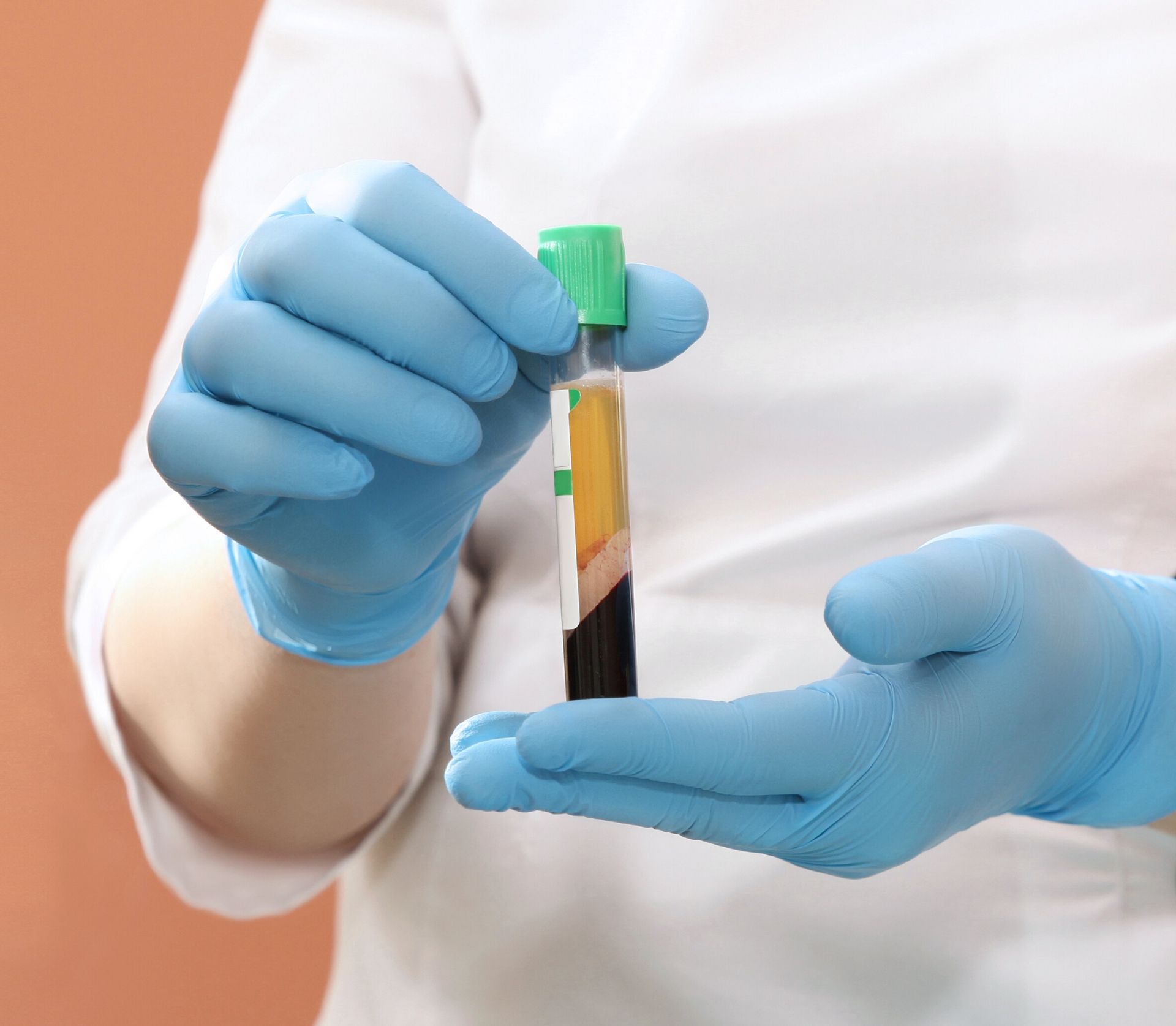The average person has about 100,000 to 150,000 hair strands on their scalp at any given time. Hair grows at a rate of about one-half inch per month, and you can expect to lose up to 100 strands per day. If you lose more than the average number, you may notice your hair getting thinner, your hairline receding and eventually partial or even total baldness. This is because you are unfortunately losing hair faster than your body can regrow it.
Are you frustrated by hair loss and hoping to find a solution? You are not alone. Many of our patients express their concern and frustration about losing hair and their hope of finding the right solution. Luckily we have seen great success treating androgenic alopecia and other types of hair loss in women and men regularly.
…Androgenic alopecia is a genetic condition and the most common cause of hair loss in men and women. About 50 million men and 30 million women in the USA have male or female pattern baldness.
The patterns of hair loss are often somewhat different between the sexes. Men usually begin to notice baldness in the front of the head at first, their hairline recedes with age and worsens along the temporal region. Hair loss may also involve thinning at the crown or top of the head. Women typically experience a different pattern-either the hair-loss diffuses, causing generalized alopecia, or they may suffer from hair thinning at the frontal region as well. There are many underlying causes of hair loss.
- Severe stress
- Surgery
- Weight loss
- Thyroid issues
- Pregnancy
- Protein deficiency
- Vitamin deficiency
- Medications
- Autoimmune diseases
- Fungal infections
- Chemotherapy
- Tight hairstyles
- Extensions
- Nutritional deficiencies
Luckily, Platelet Rich-Plasma Therapy (PRP) can help the vast majority of patients stop and reverse hair loss and even regrow hair. Physicians worldwide have been using PRP therapy mainly for treatments of damaged joints and other orthopedic injuries. Medical professionals then started using PRP for hair rejuvenation after discovering that high concentrations of platelets in plasma cells promote collagen growth as well as hair growth by stimulating the body’s ability to heal itself.
There are other hair rejuvenation treatments on the market right now, but unfortunately, they are more problematic. Two FDA-approved medications for hair loss, Finasteride and Minoxidil, must be taken over a long period of time, and unfortunately, the results tend to be very inconsistent.
Another option is a hair transplant, but it tends to be too invasive for most patients, and there is significant recovery time involved. Also, this type of treatment is usually considered only for dramatic hair loss since it is a surgery. By that time, it might be too late to take advantage of effective and non-invasive treatments such as PRP. A minimal amount of hair follicles present in the area is typically needed to obtain desirable results.
If a patient suffers from an underlying disorder such as thyroid disease, hormonal imbalance, or lupus, it is best to resolve the underlying condition first as these conditions will continue causing hair loss over time. We treat many patients with hormone issues and would recommend addressing the root of the problem (hormones) before focusing on the hair itself. Also, patients who use blood thinners regularly might not benefit from this treatment.
Most importantly, PRP therapy works best when the hair loss is recent, and patients still have hair follicles in the area. The best time to use PRP for hair rejuvenation is when the patient experiences slight hair loss, before the condition becomes severe and irreversible. PRP procedures truly harness the body’s power to heal and rejuvenate. Blood has two main components: red blood cells and plasma. Plasma contains both platelets and white blood cells, which are very rich in growth factors. Growth factors are what signal to our skin cells to function. They can help stimulate our hair follicles as well, which leads to new hair growth.
We typically recommend a series of 3-4 treatments to see a significant improvement for the majority of patients. We start the process by having a consultation and evaluation to ensure the patient is the right candidate for PRP for hair rejuvenation.
To make this procedure virtually pain-free, we like to start the PRP therapy for hair rejuvenation with a series of nerve-blocking injections. We then follow up with drawing a small amount of blood, typically from the arm, and then separating the different parts of the blood by spinning it in the centrifuge. This allows us to separate out the red blood cells from the platelet-poor and platelet-rich plasma. The plasma that is rich in platelets is drawn up into a syringe, which is then injected directly into the scalp in the areas that need increased hair growth. A Dermapen tool is used for microneedling of the scalp to maximize the effects of the treatment further.
The first change most patients usually notice after receiving this treatment is a decrease in hair shedding, which is typically followed by early regrowth and an increase in hair thickness. To decide if PRP for hair rejuvenation is right for you, you should do your own careful research as well as consult with a physician who is experienced with this type of treatment.


